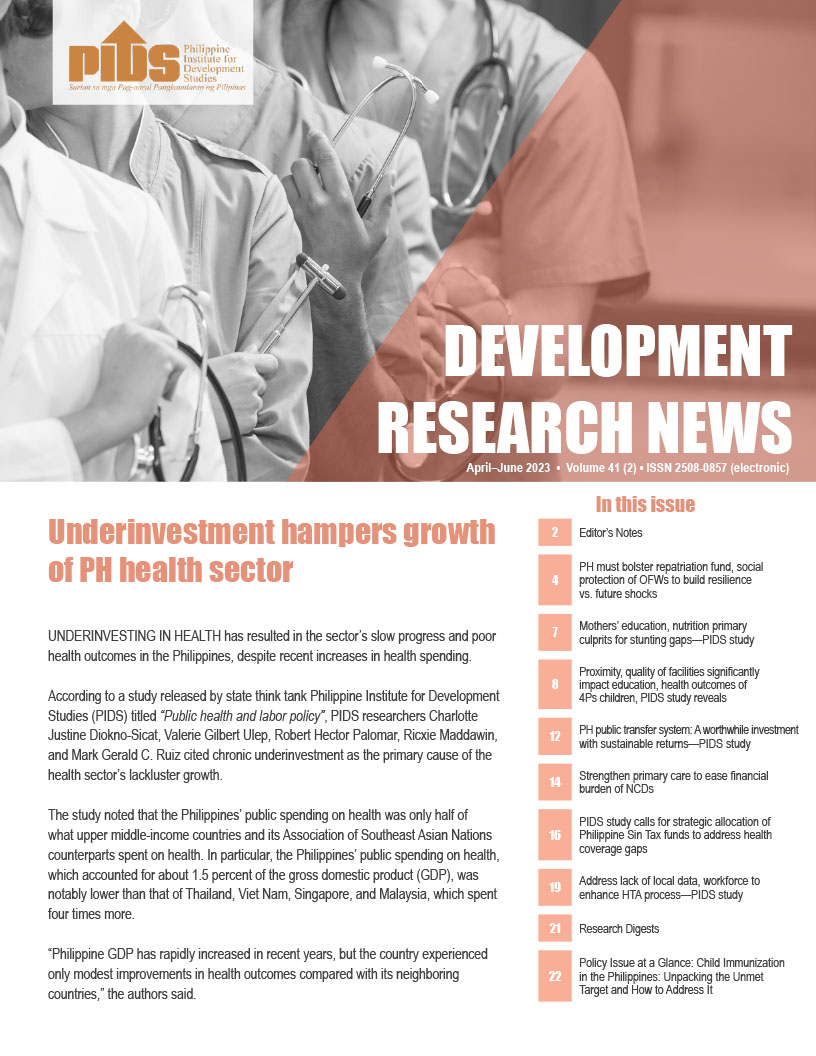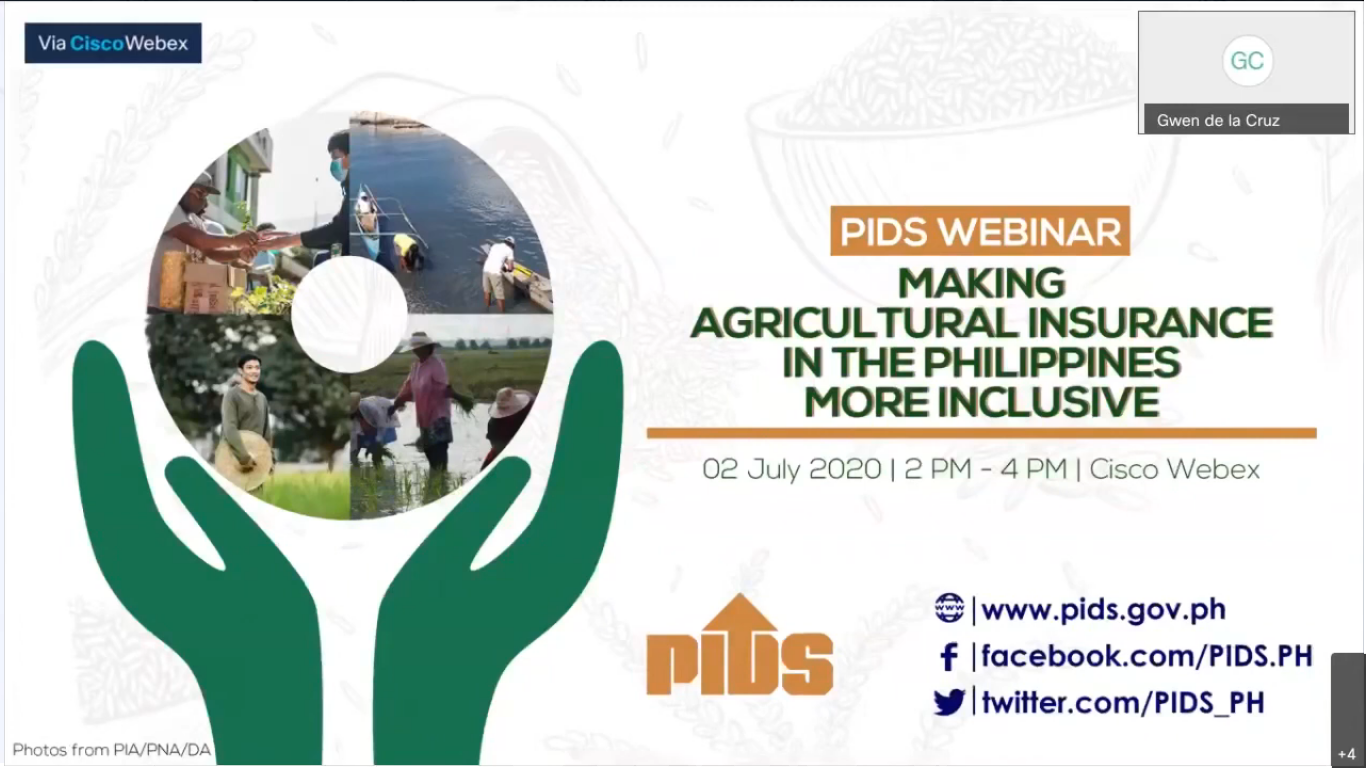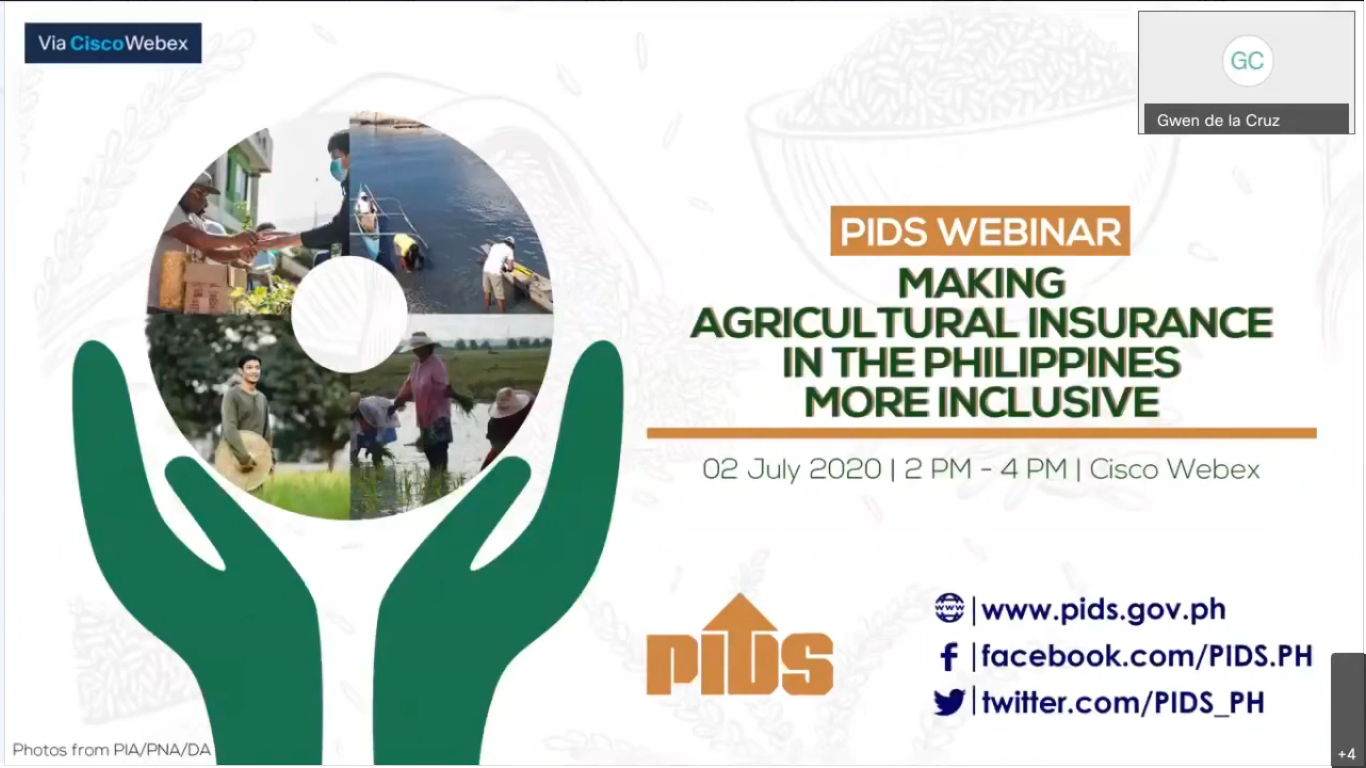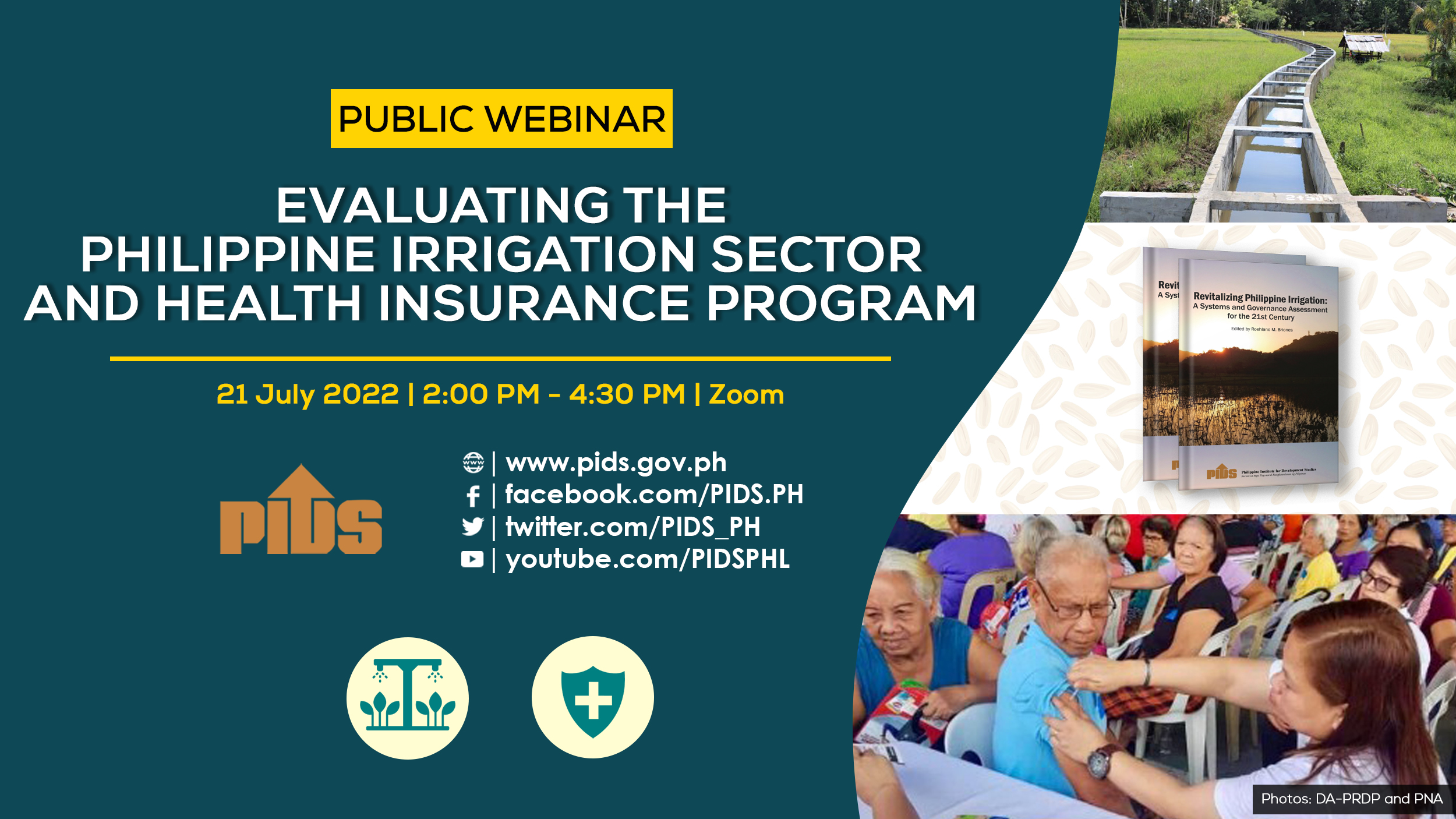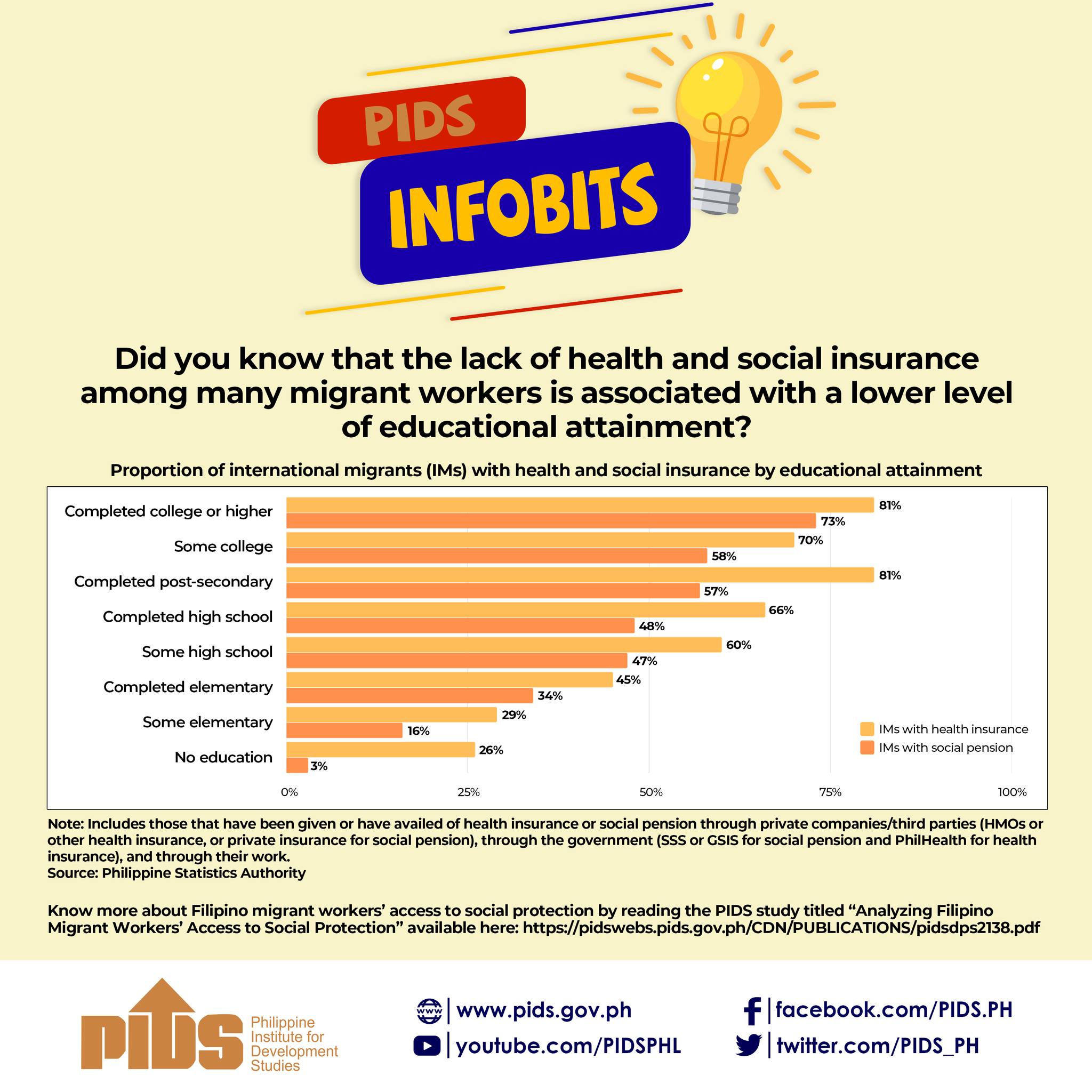The lack of funds has been cited as one of the major reasons crop insurance for Filipino farmers have limited reach and low coverage, according to the Philippine Institute for Development Studies (PIDS).
In a presentation on Thursday, PIDS Senior Research Fellow Celia Reyes said that, while crop insurance is a big help to farmers nationwide, it is not being maximized due to low penetration rate and insurance cover.
“Improvements in the design and implementation, particularly with regard to the penetration rate and insurance cover, can further increase these benefits. This will make crop insurance an effective risk-management tool,” Reyes said.
Due to insufficient funds, she said only 27 percent of rice farmers; 12.2 percent of corn farmers; and 3 percent of high-value commercial crop farmers are covered by crop insurance.
In terms of coverage of special programs, such as the free crop insurance, only 135,551 of the 1.92 million rice farmers and only 58,695 of 1.11 million corn farmers’ are covered.
“Funds of special programs are not enough to cover all eligible beneficiaries. This leads to ‘first-come, first-served’ implementation policy,” Reyes said.
She added that crop-insurance cover is insufficient when compared to the average production cost per hectare.
The average production cost per hectare for rice is P42,475 and P25,546 per hectare for corn. But the average amount covered by the insurance reached only P20,730.08 per hectare and P19,842.37 per hectare for rice and corn, respectively.
PIDS data also showed that the average indemnity for rice is at P5,129.79 per hectare and P6,645.57 per hectare for corn.
“What we find as that the insurance cover being provided by many of these programs is actually way below the production cost. So even if a farmer’s crops were completely damaged, the maximum amount that he can get as indemnity is much lower than the production cost,” Reyes said.
She urged the government to improve the design of crop insurance to increase the penetration rate and insurance cover. Reyes added that there is a need to improve the targeting of beneficiaries for free insurance premium and to validate and update the list of farmers and agrarian-reform beneficiaries.
Reyes said local government units must also be involved in amending the crop-insurance program.
In a presentation on Thursday, PIDS Senior Research Fellow Celia Reyes said that, while crop insurance is a big help to farmers nationwide, it is not being maximized due to low penetration rate and insurance cover.
“Improvements in the design and implementation, particularly with regard to the penetration rate and insurance cover, can further increase these benefits. This will make crop insurance an effective risk-management tool,” Reyes said.
Due to insufficient funds, she said only 27 percent of rice farmers; 12.2 percent of corn farmers; and 3 percent of high-value commercial crop farmers are covered by crop insurance.
In terms of coverage of special programs, such as the free crop insurance, only 135,551 of the 1.92 million rice farmers and only 58,695 of 1.11 million corn farmers’ are covered.
“Funds of special programs are not enough to cover all eligible beneficiaries. This leads to ‘first-come, first-served’ implementation policy,” Reyes said.
She added that crop-insurance cover is insufficient when compared to the average production cost per hectare.
The average production cost per hectare for rice is P42,475 and P25,546 per hectare for corn. But the average amount covered by the insurance reached only P20,730.08 per hectare and P19,842.37 per hectare for rice and corn, respectively.
PIDS data also showed that the average indemnity for rice is at P5,129.79 per hectare and P6,645.57 per hectare for corn.
“What we find as that the insurance cover being provided by many of these programs is actually way below the production cost. So even if a farmer’s crops were completely damaged, the maximum amount that he can get as indemnity is much lower than the production cost,” Reyes said.
She urged the government to improve the design of crop insurance to increase the penetration rate and insurance cover. Reyes added that there is a need to improve the targeting of beneficiaries for free insurance premium and to validate and update the list of farmers and agrarian-reform beneficiaries.
Reyes said local government units must also be involved in amending the crop-insurance program.

